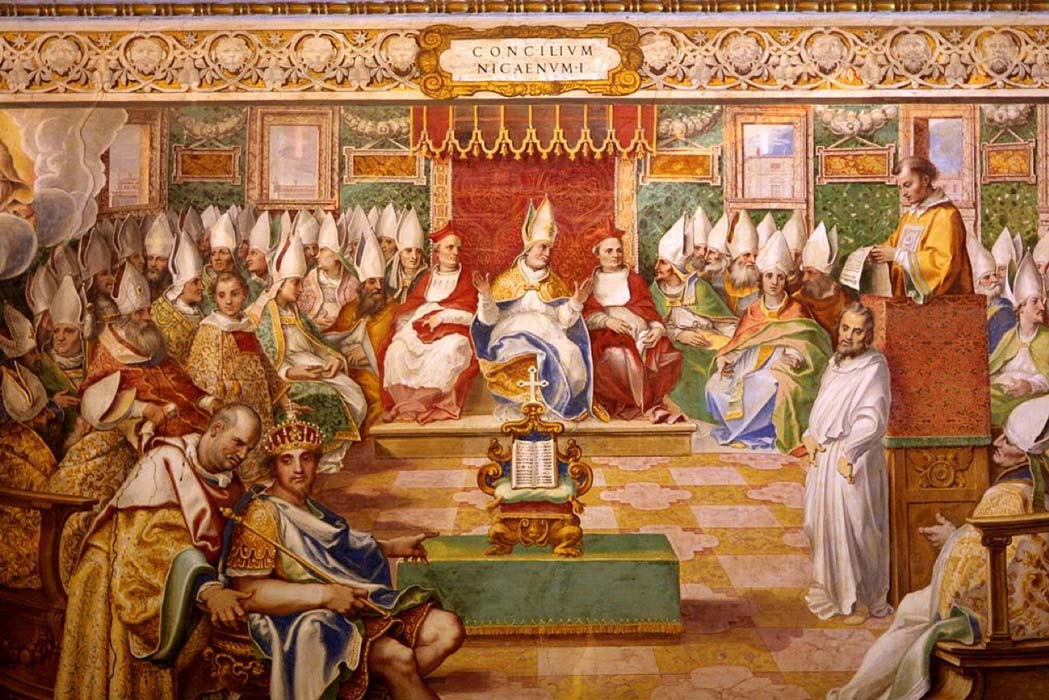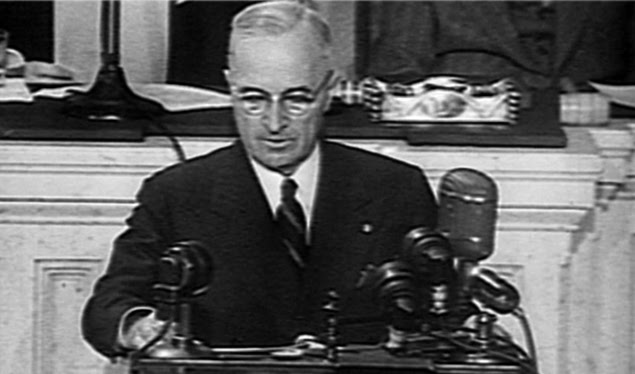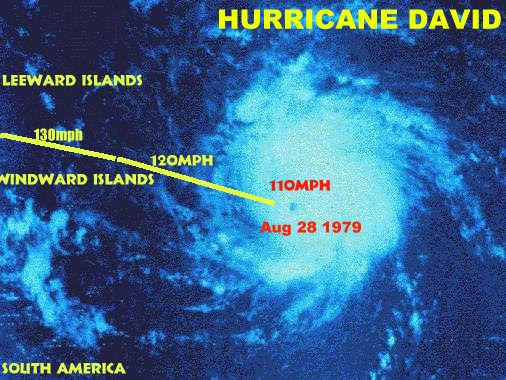
"The Great Moon Hoax" is published in the "New York Sun"
On August 25, 1835, the first in a series of six articles announcing the supposed discovery of life on the moon appears in the New York Sun newspaper.
Known collectively as “The Great Moon Hoax,” the articles were supposedly reprinted from the Edinburgh Journal of Science. The byline was Dr. Andrew Grant, described as a colleague of Sir John Herschel, a famous astronomer of the day. Herschel had in fact traveled to Capetown, South Africa, in January 1834 to set up an observatory with a powerful new telescope. As Grant described it, Herschel had found evidence of life forms on the moon, including such fantastic animals as unicorns, two-legged beavers and furry, winged humanoids resembling bats. The articles also offered vivid description of the moon’s geography, complete with massive craters, enormous amethyst crystals, rushing rivers and lush vegetation.
The New York Sun, founded in 1833, was one of the new “penny press” papers that appealed to a wider audience with a cheaper price and a more narrative style of journalism. From the day the first moon hoax article was released, sales of the paper shot up considerably. It was exciting stuff, and readers lapped it up. The only problem was that none of it was true. The Edinburgh Journal of Science had stopped publication years earlier, and Grant was a fictional character. The articles were most likely written by Richard Adams Locke, a Sun reporter educated at Cambridge University. Intended as satire, they were designed to poke fun at earlier, serious speculations about extraterrestrial life, particularly those of Reverend Thomas Dick, a popular science writer who claimed in his bestselling books that the moon alone had 4.2 billion inhabitants.
Readers were completely taken in by the story, however, and failed to recognize it as satire. The craze over Herschel’s supposed discoveries even fooled a committee of Yale University scientists, who traveled to New York in search of the Edinburgh Journal articles. After Sun employees sent them back and forth between the printing and editorial offices, hoping to discourage them, the scientists returned to New Haven without realizing they had been tricked.
On September 16, 1835, the Sun admitted the articles had been a hoax. People were generally amused by the whole thing, and sales of the paper didn’t suffer. The Sun continued operation until 1950, when it merged with the New York World-Telegram. The merger folded in 1967. A new New York Sun newspaper was founded in 2002, but it had no relation to the original.

21ST CENTURY
2009
Ted Kennedy, “liberal lion of the Senate,” dies at 77
On August 25, 2009, Edward “Ted” Kennedy, the youngest brother of President John F. Kennedy and a U.S. senator from Massachusetts from 1962 to 2009, dies of brain cancer at age 77 at his home in Hyannis Port, Massachusetts. Kennedy, one of the longest-serving senators in American.
WORLD WAR II
1944
Paris is liberated after four years of Nazi occupation
After more than four years of Nazi occupation, Paris is liberated by the French 2nd Armored Division and the U.S. 4th Infantry Division. German resistance was light, and General Dietrich von Choltitz, commander of the German garrison, defied an order by Adolf Hitler to blow up Paris’ landmarks and burn the city to the ground before its liberation.

ART, LITERATURE, AND FILM HISTORY
1962
Little Eva earns a #1 hit with “Loco-Motion”
Just as pop stardom most often depends on possessing abundant talent and a great capacity for hard work, it also can require being in the right place at the right time. This was certainly true for the diminutive, 17-year-old singer named Eva Narcissus Boyd.
EXPLORATION
1875
Englishman swims the Channel
Matthew Webb, a 27-year-old merchant navy captain, becomes the first known person to successfully swim the English Channel. Captain Webb accomplished the grueling 21-mile crossing, which really entailed 39 miles of swimming because of tidal currents, in 21 hours and 45 minutes.

RELIGION
325
Council of Nicaea concludes
The Council of Nicaea, the first ecumenical debate held by the early Christian church, concludes with the establishment of the doctrine of the Holy Trinity. Convened by Roman Emperor Constantine I in May, the council also deemed the Arian belief of Christ as inferior to God as heretical, thus resolving an early church crisis.
WORLD WAR I
1914
Germans burn Belgian town of Louvain
Over the course of five days, beginning August 25, 1914, German troops stationed in the Belgian village of Louvain during the opening month of World War I burn and loot much of the town, executing hundreds of civilians.
U.S. PRESIDENTS
1950
Truman orders army to seize control of railroads
On August 25, 1950, in anticipation of a crippling strike by railroad workers, President Harry S. Truman issues an executive order putting America’s railroads under the control of the U.S. Army, as of August 27, at 4:00 pm.

WESTWARD EXPANSION
1896
Outlaw Bill Doolin is killed
The outlaw Bill Doolin is killed by a posse at Lawton, Oklahoma. Born in Arkansas in 1858, William Doolin was never as hardened a criminal as some of his companions. He went west in 1881, finding work in Oklahoma at the big ranch of Oscar D. Halsell.
A RT, LITERATURE, AND FILM HISTORY
RT, LITERATURE, AND FILM HISTORY
1939
"The Wizard of Oz" opens in U.S. theaters
On August 25, 1939, The Wizard of Oz, which will become one of the best-loved movies in history, opens in theaters around the United States. Based on the 1900 children’s novel The Wonderful Wizard of Oz, by L. Frank Baum (1856-1919), the film starred Judy Garland as the young Kansas farm girl Dorothy, who, after being knocked unconscious in a tornado, dreams about following a yellow brick road, alongside her dog Toto, to the Emerald City to meet the Wizard of Oz.
NATURAL DISASTERS & ENVIRONMENT
1979
Hurricane David is born
On August 25, 1979, the storm that will become Hurricane David forms near Cape Verde off the African coast in the eastern Atlantic Ocean. It would go on to devastate the island of Dominica, and then the Dominican Republic, killing 1,500 people.
CRIME
1984
Truman Capote, author of “In Cold Blood,” dies
Truman Capote, the author of the pioneering true-crime novel In Cold Blood, dies at age 59 in Los Angeles. In Cold Blood told the story of the 1959 murder of the Clutter family in Holcomb, Kansas. Richard Hickock and Perry Smith, two parolees from the Kansas State Penitentiary.

1980S
1985
Samantha Smith dies in plane crash
Samantha Smith, the 13-year-old “ambassador” to the Soviet Union, dies in a plane crash. Smith was best known for writing to Soviet leader Yuri Andropov in 1982 and visiting the Soviet Union as Andropov’s guest in 1983.

WORLD WAR II
1945
An American missionary to China becomes the first casualty of the Cold War
On August 25, 1945, John Birch, an American missionary to China before the war and a captain in the Army during the war, is killed by Chinese communists days after the surrender of Japan, for no apparent reason.




Comments
Post a Comment